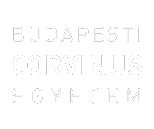Adisova, Saadat (2021) Pushing the limits of advertising : How United Colors of Benetton used shockvertising in its advertising campaigns. BA/BSc szakdolgozat, BCE Kommunikáció és Szociológia Intézet, Kommunikáció- és Médiatudomány Tanszék.
|
PDF
- Requires a PDF viewer such as GSview, Xpdf or Adobe Acrobat Reader
1MB |
Absztrakt (kivonat)
The present paper reviewed the research conducted on the topic of advertising as a communication tool and discussed the phenomenon of shocking advertising. Benetton can be considered the leading brand that actively used scandalous and shocking advertising. Advertising campaigns of the Italian clothing brand consisted of socially important messages, which gave the company an unprecedented commercial and branding effect. Communication of the brand excited the minds for more than thirty years, forcing consumers to think about pressing problems. The research analyzed Benetton's advertising campaigns; in particular, four main research questions were formulated: Which of the genders, races, ages, and social positions were represented the most in Benetton's 50 randomly selected advertising campaigns from the year 1985 to 2018? Which of the social issues were covered the most in the brand's advertisements? What messages did the brand want to convey to the public? How often did Benetton used shock factor in their advertising campaigns? The theoretical part first gave a short path of the history of media and the culturalization of mass media. Afterward, it was followed by key media effect theories such as the magic bullet theory, agenda-setting, and framing. The section of the mass communication reviews advertising as a mass communication tool. Further key terms introduced an overview of marketing and marketing mix, followed by the focus on the topics of advertising and shockvertising. The fundamental knowledge has relied on the works of several researchers such as Denis McQuail (2010), Marshall McLuhan (1967, 1994), and Manuel Castells (2002, 2004), and other contributors of media and advertising research. The qualitative approach was used in the content analysis research, analyzing 50 randomly chosen United Colors of Benetton advertising campaigns from the last three decades (1985 - 2018). The data was investigated to recognize the following codes: object/entity, gender, race, age, message/interpretation of the image, social position, social issue, shock content, adult content, caption, and collaboration with NGO. On the strength of the applied method, the observations have reported demonstratable results. According to the overall data, the brand's advertising campaigns were diverse. Four types of object/entities, five classifications of gender code, nine classifications of race and age codes, and forty-two social positions were represented. The portrait of a Black adult male holding a social position of a model was represented the most in the brand's advertisements throughout three decades. The second research question’s result revealed that most of Benetton's advertising campaigns were focused on representing diversity to fight the lack of representation in the media world. The third research question raised a positive mark conducting that conducted that the 'Promotion of tolerance, unity, inclusion, and respect for diversity' message was represented the most in advertising campaigns, instead of delivering traditional fashionable images, the brand chose to follow untraditional for 20th-century advertising path, thereby setting an example for new generations who are now striving to represent the diversity in advertising campaigns to fit in with the modern demands of humanity for inclusivity. Lastly, shock content was present in 1/3 of the content analysis advertising campaigns, constituting that Benetton used shockvertising to promote social issues and themselves. However, in most of the cases, the shocking content was not displayed. The Benetton Group has revolutionized advertising. The company has proven that it is unnecessary to place a brand in a familiar associative array for the successful development of a brand. On the contrary, brands can promote themselves by covering such significant issues as war, plague, catastrophe, and disease. The brand turned to topics that had nothing to do with the advertised label: racial discrimination, AIDS, war. Colorful condoms, newborn babies, dying people, kissing priests and nuns, mating horses - all this could be seen on the billboards of the Benetton fashion house. The photos shocked the audience and were banned, but at the same time awarded with prestigious awards, and intergovernmental organizations offered the brand cooperation to publicize the social problems of our world.
| Tétel típus: | BA/BSc szakdolgozat |
|---|---|
| Témakör: | Marketing |
| Azonosító kód: | 14779 |
| Képzés/szak: | Communication and Media Science |
| Elhelyezés dátuma: | 12 Szept 2022 07:54 |
| Utolsó változtatás: | 12 Szept 2022 07:54 |
Csak a repozitórium munkatársainak: tétel módosító lap

